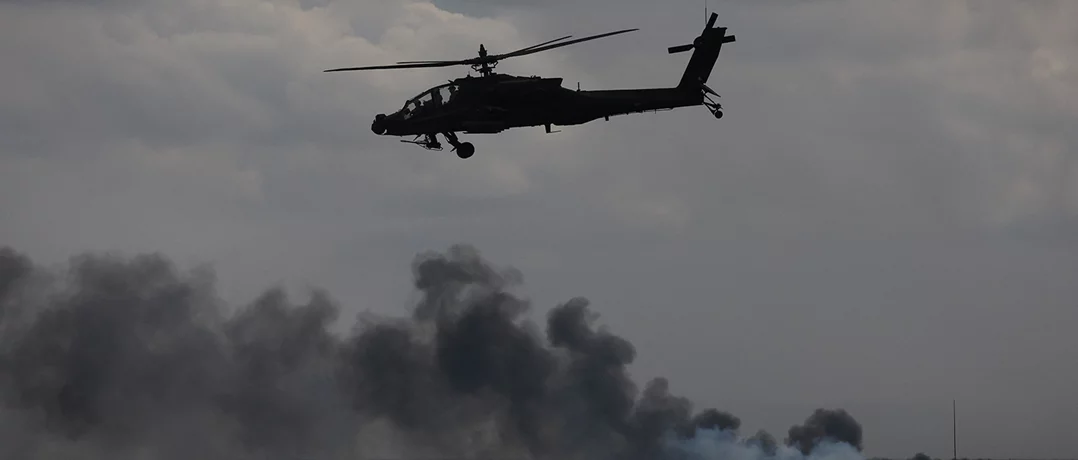Europe is remilitarizing, integrating civilian systems and alliances, as Russia’s aggression ends the postwar illusion of permanent peace.
Europe braces for a new era of war preparedness
Europe braces for a new era of war preparedness


Europe is entering a new phase of militarization, one that feels both urgent and unsettling. Across the continent, governments are rewriting defense strategies not as abstract doctrines but as practical preparations for the possibility of high-intensity conflict. The invasion of Ukraine by Russia was the immediate shock, but the deeper story is about how history, geography, and political identity are forcing each state to confront what a major war on European soil could mean.
France rebuilds its cold war systems
In Paris, the shift is being framed as nothing short of a national transformation. President Emmanuel Macron has long positioned France as Europe’s strategic heavyweight, distinct from NATO’s American umbrella and bolstered by its nuclear arsenal. But the war in Ukraine exposed a weakness common across Europe: the dismantling of Cold War–era systems built for wartime resilience. France is now trying to reassemble those networks, but with modern urgency.
The French Ministry of Defense has sent letters to regional health agencies, urging them to quickly start preparations. During the Cold War, such systems existed across Europe, but they were dismantled under the illusion that the continent had reached a “postwar era” or the so-called “end of history.” The new directives reverse that assumption. France is now planning for a scenario in which it would act as a “rear base” for treating wounded soldiers, both French and allied, during a major military engagement in Europe.
Hospitals have been ordered to prepare for a massive influx of casualties, between 10,000 and 50,000 wounded over 10 to 180 days, with peaks of up to 250 patients a day during short surges. Medical staging centers are to be established near key transport hubs, ports, airports, train stations, and bus depots, to stabilize injured soldiers before sending them back to their home countries, particularly allies from NATO and the EU. Rapid triage, treatment, and evacuation pathways are to be rehearsed and enforced to ensure efficient patient flow.
The Ministry of Health’s plan requires hospitals to account for critical resources, beds, operating rooms, imaging equipment, blood transfusion supplies, and to expand their capacity accordingly. Staffing rotas are being designed to withstand months of unrelenting pressure, with built-in psychological support for healthcare workers themselves.
This is not merely bureaucratic fine print; it represents a profound shift in thinking. Macron’s government is making the case that war readiness is not simply about the armed forces but about the resilience of the entire fabric of society.
“France Must Rearm”
That point is echoed by Renaud Girard, senior reporter and international columnist at Le Figaro, who in an interview with The Beiruter stressed that France’s security concerns today are less about invasion and more about obligations.
France does not fear a direct invasion of Paris, as in 1814, nor does it believe Vladimir Putin seeks to take the French capital. But it has freely entered alliances within NATO and the European Union. The Lisbon Treaty obliges collective defense of EU members under attack, just as NATO’s Article 5 does.
Girard sees Russia’s aggression as a test of France’s credibility to defend its allies, particularly in the Baltics. Nuclear deterrence, he notes, can protect France’s vital interests, but conventional deterrence is equally necessary.
"We are obviously not going to launch nuclear weapons if Russia tries to seize Narva, in Estonia. That’s why we need pre-positioned troops and fighter jets to deter Moscow."
His view reflects a broader European recognition that deterrence today is not symbolic but requires visible, immediate military presence in vulnerable regions.
Girard also insists that the very nature of warfare has changed.
“It is now fought with drones. The French and European defense industries must adapt. Yes, France must rearm.”
His argument underlines what governments across the continent are already practicing: rearming not just with traditional forces but with new technologies, cyber defenses, and industrial strategies suited to modern conflict.
Poland, Germany, Sweden, and Britain respond in their own ways
That sense of urgency is mirrored across the continent but shaped by very different national memories. For Poland, rearmament is not a policy choice but a matter of survival. Its modern identity is inseparable from centuries of partitions, invasions, and domination by both Moscow and Berlin. Since regaining independence in 1989, Warsaw has warned its neighbors not to underestimate Russia’s ambitions. Now, with war raging just across its border, Poland is positioning itself as NATO’s eastern shield. As of September 20,2025, the UK has deployed RAF Typhoon fighter jets over Poland as part of NATO’s “Eastern Sentry” mission, helping patrol Polish airspace to deter threats and reassure allies.
This sense of immediacy explains its breakneck military expansion, not only in troop numbers but in fortifications and infrastructure along its frontier.
Germany’s trajectory is more conflicted. The invasion of Ukraine shattered Berlin’s long-held assumption that economic interdependence, particularly with Russia, could keep Europe safe.
Sweden’s transformation has been equally striking, though in the opposite direction. For more than two centuries, neutrality was the bedrock of its foreign policy. Yet geography has proven merciless. The Baltic Sea, long a buffer, has become a front line since Russia’s aggression against Ukraine. Stockholm’s decision to join NATO was the formal break, but the deeper shift is psychological. Sweden has reintroduced conscription and is openly retooling its military for “high-intensity conflict,” accepting that it can no longer stand apart. Neutrality, once a proud symbol of independence, is now seen as vulnerability.
Britain, for its part, never abandoned its military identity. As a nuclear power with global commitments, London has always seen itself as central to European defense. Yet Brexit and the growing American focus on Asia have pushed the UK to reassert itself as Europe’s security guarantor. Its pledges to increase defense spending are about more than deterring Russia; they are also about signaling to allies, especially Washington, that Britain remains indispensable. London’s emphasis on scaling up its defense industrial base reflects a broader awareness that Europe may not always be able to depend on the U.S. in the same way it has since 1945.
Russia’s militarization sets the pace
Russia’s militarization is the anchor of Europe’s current security shift. Beyond simply increasing troop numbers and defense spending, Moscow is reshaping its military doctrine and industrial base for sustained conflict. The Kremlin has explicitly linked its military expansion to a perception of NATO encroachment, positioning itself as a counterweight to what it sees as a Western sphere of influence threatening Russian interests. By committing an unprecedented share of its federal budget to defense, Russia signals that it is ready to fight a protracted war, absorb sanctions, and endure domestic economic strain to secure its objectives.
The scale of this build-up carries profound implications. For European leaders, it means planning for scenarios once considered unlikely: prolonged campaigns, high casualty figures, disrupted supply chains, and extended societal strain. Russia’s investments in advanced weaponry, from precision missiles to cyber and electronic warfare capabilities, underscore a strategy that is not limited to conventional frontline battles but encompasses hybrid threats and the capacity to destabilize the European theater broadly.
Paradoxically, the Kremlin’s aggressive militarization has galvanized Europe. Where Moscow may have hoped to intimidate or divide NATO, its actions have spurred continental unity, accelerated defense spending, and forced the integration of civilian and military systems in preparation for a potential war.
The return of “Total Defense”
What makes this moment historically unusual is how thoroughly civilian systems are being integrated into military planning. France’s hospital directives are emblematic. Across Europe, governments are hardening borders, fortifying supply chains, preparing industries for rapid wartime production, and even planning psychological support for populations under prolonged strain. The concept of “total defense”, once associated only with small Nordic states, is returning to the European mainstream. It reflects a recognition that modern wars are not confined to soldiers at the front. They ripple through economies, healthcare systems, and the social fabric.
Between NATO and autonomy
Even as Europe arms itself, a tension lingers. NATO remains the backbone of the continent’s defense, and American support remains decisive in intelligence, logistics, and advanced systems. Leaders from Paris to Berlin speak often of “strategic autonomy,” the idea that Europe should be able to defend itself without the United States. For now, that remains aspirational, yet the war in Ukraine has given it new urgency.
The rearmament sweeping Europe is not simply about increasing firepower; it is about demonstrating credibility. Governments are trying to persuade citizens that sacrifices may be necessary, their allies that they can be relied upon, and adversaries that aggression will not go unanswered. Whether these preparations will be enough to deter conflict or merely lay the groundwork for it is uncertain. One thing is clear: the illusion of a “postwar Europe,” where peace was permanent and war unimaginable, has been broken.
From the hospitals of France to the training grounds of Poland, from debates in Berlin to new NATO bases in Stockholm, Europe is recalibrating its politics, economies, and societies around the possibility of war. Russia’s militarization is the pivot around which all this turns, and the scale and intent of its actions ensure that European defense planning will remain a defining issue for decades to come.


